Taiwan National Palace Museum Director Fung Ming-Chu 馮明珠 Interview
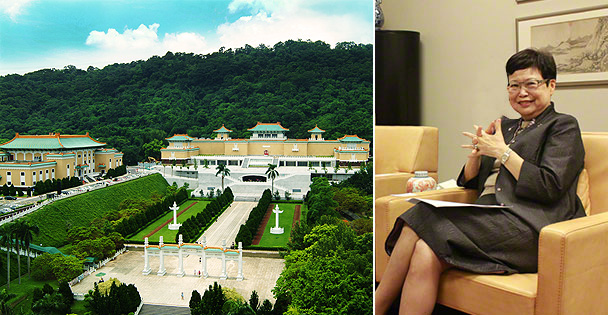
Taiwan’s National Palace Museum represents one of the world’s greatest repositories of Chinese Antiquities, with a permanent collection of artifacts reaching back to the earliest ages of Chinese history, all the way forward through to the Qing Dynasty, the works illustrate so much about Chinese history, and human history as well – what it means to review the arts and culture of a civilization as it moves across nearly 8,000 years – that's nearly 3 million days - representing 400 generations of lives lived. An amazing collection of treasures, lending insights at each glance: what did a neolithic stone carver think as he or she smoothed jade under - firelight, afternoon, dawn or dusk? In what way are these the same thoughts we have? What did a student, some four and a half thousand years later, en route to take a civil service exam, think as he traveled to the test? What did he think if he passed? What did his future promise if he failed?
Recently, we had the chance to sit down with Fung Ming-Chu 馮明珠, the director of Taiwan’s National Palace Museum. Among many topics Director Fung talked about: what it takes to make a museum successful; what era of Chinese history she would have liked to live in most; book recommendations and plans for the Southern Expansion of the National Palace museum, slated to open in 2015 in Chiayi.
- 1. For a museum to be successful, what does it have to do?
-
A museum's role is to serve the people. For a museum to be successful it must offer many kinds of services, and encourage people to visit – to attract people. Serving the people; attracting visitors, and offering many services, these are the keys.
- 2. Among many eras of Chinese history, which era would you like to live the most?
-
I've never thought about it. Many have said that they would like to have lived during the Ming Dynasty. It's among the most prosperous eras in Chinese history. Jonathan Spence, an American historian, said that if he could choose one period to live in Chinese history it would be the Ming Dynasty. According to Spence, society during the Ming Dynasty was opening. At the same time, a form of "pop culture", if you will, was developing - there were a lot of activities in the society. There were especially many literati in this period. So, lifestyles were colorful. In that time, the Yangtze River basin was more peaceful. Though there were wars, they occurred on the frontiers. Furthermore, parts of political power transferred from north to south. Growing out of all this the Yangtze basin was full of artistic activity.
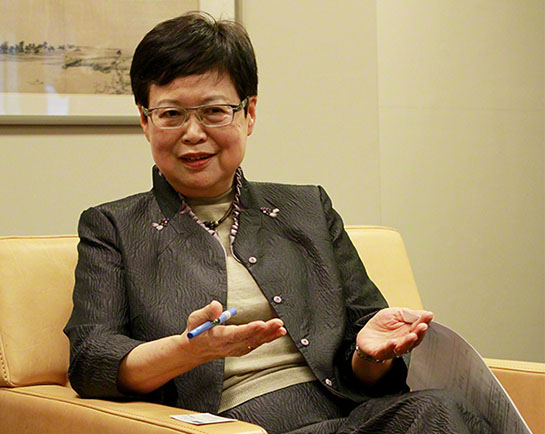 Director Fung Ming-Chu 馮明珠
Director Fung Ming-Chu 馮明珠I've never thought about which period I would want to live in. But to answer your question, I would say the Tang Dynasty. Because at that time, China was very powerful. Moreover, according to the evidence, the Tang Dynasty had comparatively less constraints on females. In the following dynasty, women lost much of their freedom. Many people will also probably note the the flourishing Age of the Han as an interesting era to live in.
- 3. Which era of Chinese history needs the most research?
-
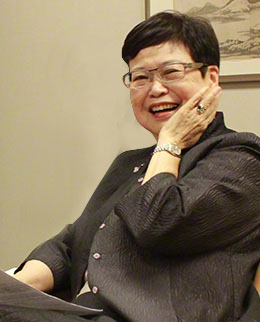 Director Fung Ming-Chu 馮明珠
Director Fung Ming-Chu 馮明珠I think every period should be researched! My expertise is in the Ching Dynasty. Each historians has their own favorite.
As far as I know, in mainland China, many historians are researching the period of 1911 to 1949.
In Taiwan, historians focusing specifically on Taiwan’s history are increasing.
There is also another key – the trend of research and its relationship to grants. The availability of funding always moves the direction of research.
- 4. If you were going to identify a novel, a good historical novel from Chinese history, which would you choose?
-
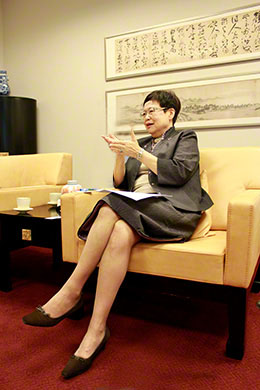 Director Fung Ming-Chu 馮明珠
Director Fung Ming-Chu 馮明珠Novels in Chinese history: A Dream of Red Mansions. It introduces the society in the Ching Dynasty. Though it is a novel, it describes many layers and aspects of the era very well.
Another novel which introduces the Ming Dynasty is Golden Lotus. It has an impressive narrative & story line. Golden Lotus includes some very steamy scenes, but it also reflects many phenomena in the society at that time. These two novels are very famous and available in English.
The first historical novel I read was The Romance of the Eastern Zhou. The National Palace Museum has many pieces from the period the novel is set in (1045–256 BC). Such as the Mao Gong Cauldron, coming from the Western Zhou to Eastern Zhou eras. China was being divided into many states during this time. Between these states there was fighting and cooperation. Also, this was the age of Confucius.
I read this book when I was in high school. The Romance of the Eastern Zhou led me to choose history as my career.
- 5. I was talking to my colleagues as we were coming over. You’ll be happy to know that each one of them had come to National Palace Museum recently! So, even people who work in Taipei also come to the museum. As the director of the National Palace Museum, what gives you the most enthusiasm?
-
My biggest enthusiasm is the work itself. Since receiving my Master’s degree, I have been at the National Palace Museum 35 years. I love my job! Although at times the demands are many and can exhaust you, when you love your job, any difficulty seems instead just like a challenge, an opportunity. Today, we’ve succeeded in increasing the number of visitors to visit National Palace Museum. As the Director, I feel grateful.
- 6. Tell me about the museum’s expansion? Is there going to be a branch in southern Taiwan?
-
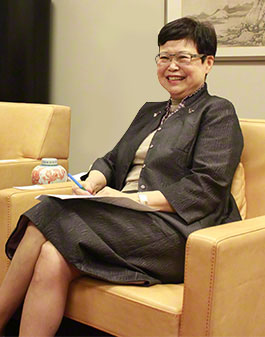 Director Fung Ming-Chu 馮明珠
Director Fung Ming-Chu 馮明珠Yes! In Taibao City, Chiayi County (map). We are slated for opening in December, 2015, in December. You could define it as an “Asian Art Museum. ” And when it opens, we welcome you to have another interview!
Well… we are looking forward to that. Definitely! That's a deal! Director Fung, thank you so much! Really!
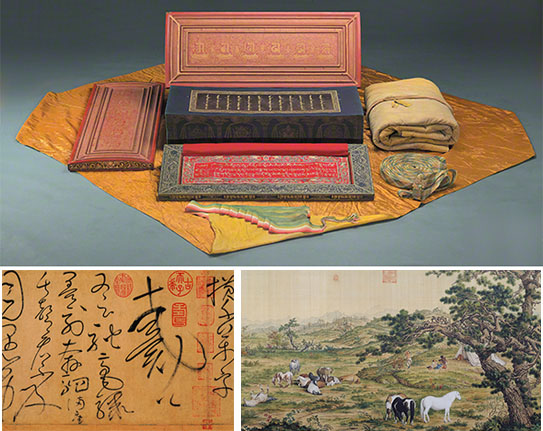 Tibetan Dragon Sutra (Compiled during the Reign of Emperor Kangxi); Autobiography (Tang Dynasty); One Hundred Horses (Lang Shih-ning, Qing Dynasty)
Tibetan Dragon Sutra (Compiled during the Reign of Emperor Kangxi); Autobiography (Tang Dynasty); One Hundred Horses (Lang Shih-ning, Qing Dynasty)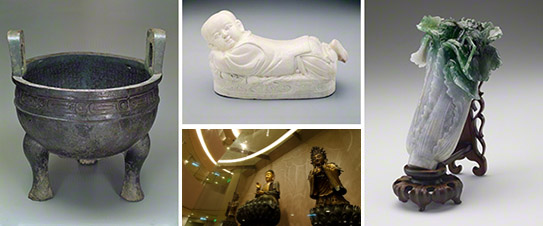 Mao Kong Cauldron (Late West Zhou Dynasty); White pillow in the shape of a recumbent child, porcelain (Northern Song); Jadeite Cabbage ( Qing Dynasty); Exhibit Room
Mao Kong Cauldron (Late West Zhou Dynasty); White pillow in the shape of a recumbent child, porcelain (Northern Song); Jadeite Cabbage ( Qing Dynasty); Exhibit Room




